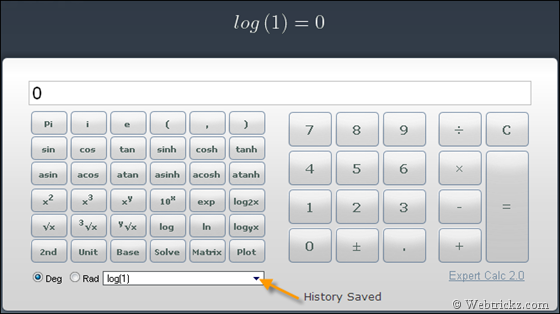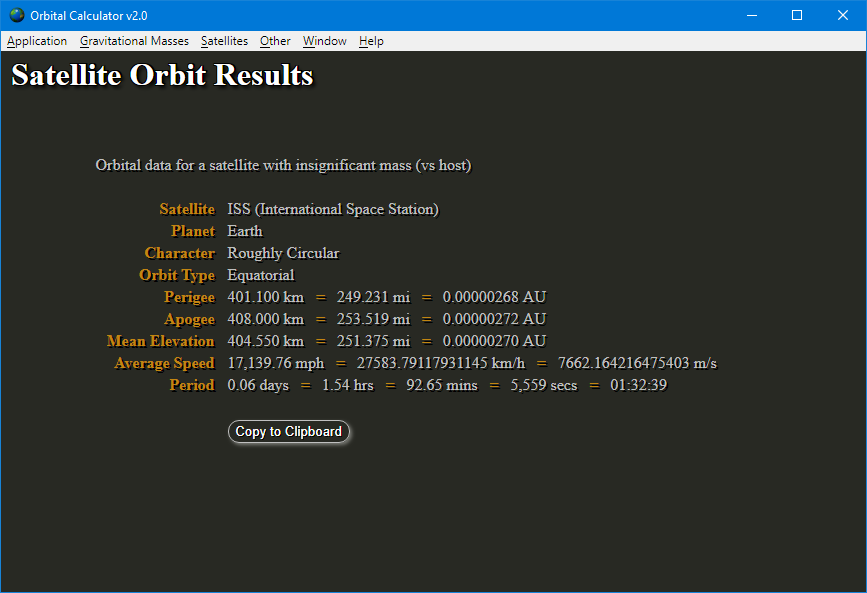Menu Calculator V1 1 – Calculator On You Status Bar
Often you may have an idea of how much work is involved in a task, but not necessarily how long it will take to complete. How long it takes depends on the other main factor in this equation: resources. But what if you don’t yet know how many resources you can commit?
- Menu Calculator V1 1 – Calculator On Your Status Bar Settings
- Menu Calculator V1 1 – Calculator On Your Status Bar In Excel
- Menu Calculator V1 1 – Calculator On You Status Barriers
- Menu Calculator V1 1 – Calculator On Your Status Bar Display
Microsoft Project certainly seems to nudge a project manager into typing his or her task’s Duration into the project. Fortunately, you can just as easily type in Work and then have Project calculate the Duration based on the number of people you assign and their availability.
The first step in using Project this way is to add the Work column. To add a column in Project, simply right-click on a column heading and choose Insert Column. Here I have added Work to the Entry table next to Duration.
Now if you skip over the Duration, set Work, then assign a resource, Project calculates Duration. Here I typed in 24 hours of work which Project estimated as 3 days’ duration when I assigned Bob.
When you calculate Duration like this in Auto Scheduled mode, Duration becomes Estimated – “3 days?” with the question mark. If you also mark the task as Effort Driven, Project will know to continue to calculate Duration when you add or remove Resources in the future. You can change both the Effort Driven and Estimated property for a task by adding a column or using the Task Information dialog box (double-clicking on a task).
But, to make this easier, you may want to just set an option and have these things happen by default. You can set both these defaults by going to Options in the File tab, navigating to the Schedule tab, then looking under Scheduling options for this project.
Now you are on your way to a Work-driven project schedule!
Author: Ryan Donelan rdonelan@microknowledge.com
Created to look just like your very own menu, MealBuilder interacts with your diner’s ordering habits on a per-location basis. Track menu items selected, for on trend analysis; Know real-time the ingredients your diners are looking for; Track allergen and dietary preference choices; Sync into your ordering site(s). Oct 09, 2018 In addition to Wi-Fi status (listed below), the Network pane will also offer 'menulet' options for things like modems and VPNs if you have them set up, while menu bar icons related to keyboard.
Remember, if you are a MicroKnowledge customer and have a software question to ask, feel free to contact us at any time by using our Support link at the top of the site. Your question might be featured in our next blog entry!
To calculate the antilog, i.e., the number that the log represents, enter the Log and click the 10 X button. You can use this calculator anytime you wish including when you take your examination with ProctorU. If you take a paper final or the on-campus final, you will need to purchase a simple calculator. Refer to the Menu overview document provided by the assessor 2 Discuss and from HOSPITALITY SIT60312 at William Angliss Institute.
Large, easy and convenient online calculator
Use for work, school or personal calculations. You can make not only simple math calculations and calculation of interest on the loan and bank lending rates, the calculation of the cost of works and utilities.
Commands for the online calculator you can enter not only the mouse, but with a digital computer keyboard. Detailed instructions for using the calculator, see below.
Menu Calculator V1 1 – Calculator On Your Status Bar Settings
Instructions for using the online calculator
Keys function
[ 0 ], [ 1 ], [ 2 ], ... [ 9 ] - standard number keys;
[ 00 ] - key input 2 zeros;
[ → ] - remove the last character on the display;
[ +/- ] - change the mathematical sign of;
[ XY ] - calculation of X to the power of Y;
[ √ ] - calculate the square root;
[ + ] - addition, [ - ] - subtraction, [ х ] - multiplication, [ ÷ ] - division;
[ % ] - calculates percentages;
[ M+ ] - stored in the memory with the sign [ + ];
[ M- ] - stored in the memory with the sign [ - ];
[ MR ] - get the contents of memory;
[ MC ] - erases the memory content;
[ AC ] - reset the calculator and reset the memory;
[ C ] - resets the calculator without resetting the memory.
Examples of calculations on the online calculator
Calculate the square root of 529: 529 [ √ ]. The result is equal to 23.
Raise the number 3 to a power 4: 3 [ XY ] 4 [ = ]. The result is equal to 81.
Calculation of percentage of the number of: 500 [ х ] 25 [ % ]. The result is equal to 125.
Calculating what percent is one number of another number: 25 [ ÷ ] 500 [ % ]. The result is equal to 5(%).
Adding percentage to the number: 500 [ + ] 25 [ % ]. The result is equal to 625.
Deduction percentage of the number: 500 [ - ] 25 [ % ]. The result is equal to 375.
Enter commands from the keyboard PC/Mac
To use free online calculator you can use both ordinary numeric buttons at the top of a keyboard and numeric buttons on the right of a keyboard.


To enter [ = ] - key [Enter].
To erase the last character - [Backspace] (arrow keys).
To enter [ + ] - key [ + ] at the top or [ + ] key on the numeric keypad on the right.
To enter [ - ] - key [ - ] at the top or [ - ] key on the right.
To enter [ x ] (multiplication) - key [ * ] on the numeric keypad on the right or a combination of keys[ * ] and [ Shift ].
To enter [ ÷ ] (divide) - key [ / ] on the numeric keypad on the right or a combination of keys [ : ] and [ Shift ].
Frequently asked questions about the calculator
Why do we get 8 when trying to calculate 2+2x2 with a calculator?
Menu Calculator V1 1 – Calculator On Your Status Bar In Excel
Calculator performs mathematical operations in accordance with the order they are entered. You can see the current math calculations in a smaller display that is below the main display of the calculator.
Calculations order for this given example is the following: 2+2=4, subtotal - 4. Then 4x2=8, the answer is 8.
The History of calculators
Menu Calculator V1 1 – Calculator On You Status Barriers
The ancestor of the modern calculator is Abacus, which means 'board' in Latin. Abacus was a grooved board with movable counting labels (stones or bones).
Menu Calculator V1 1 – Calculator On Your Status Bar Display
Presumably, the first Abacus appeared in ancient Babylon about 3 thousand years BC. In Ancient Greece, abacus appeared in the 5th century BC.